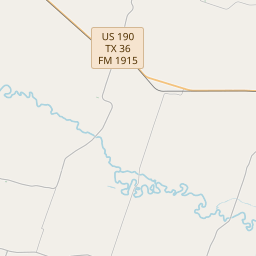O.J. Thomas High School
Historical marker location:






O.J. Thomas High School
Early efforts to serve the educational needs of Cameron's African American students centered on church instruction at a place called "Little Rocky" Church in the Marlow Community. In 1923, Oscar John Thomas (1894-1977) joined the district to serve as principal and teacher. Under his leadership, the district secured financing from the Julius Rosenwald fund and built a new facility in 1925. The school was renamed for Thomas in 1938. Thirty years later, during integration, the facility became Cameron Junior High. A 1974 petition changed the name back to O.J. Thomas. In 1995, the junior high closed, and in 1998, the building was sold to an alumni group for use as a community center.
(2002)
As one of the most visible programs of the Texas Historical Commission (THC), historical markers commemorate diverse topics in Texas history, including: the history and architecture of houses, commercial and public buildings, religious congregations, and military sites; events that changed the course of local and state history; and individuals who have made lasting contributions to the state, community organizations, and businesses.
The Johnson Space Center, located in Houston, played a crucial role in the development of the U.S. space program. It was here that NASA trained its astronauts and mission control teams, and it continues to be an important center for space research and exploration today.
In 1825, the Mexican government issued land grants in the region, attracting a wave of American immigrants to the area. In 1834, the Mexican government designated Milam County as a separate municipality, and it was named after Benjamin Rush Milam, a prominent Texas revolutionary. After the Texas Revolution in 1836, the region experienced continuous growth and development.
During the mid-19th century, agriculture became the primary industry in Milam County, with cotton being the dominant crop. Many plantations were established, relying on slave labor until the abolition of slavery in 1865. The county also saw the establishment of several small towns, including Cameron, Rockdale, and Buckholts, which served as centers of trade and commerce.
In the late 19th and early 20th centuries, the arrival of the railroad played a significant role in the county's development. The expansion of rail lines allowed for easier transportation of goods and people, boosting the local economy. The county experienced periods of prosperity and setbacks, including the Great Depression, but managed to rebound and adapt to changing economic conditions.
Today, Milam County remains an agricultural hub, known for its production of cotton, corn, and livestock. It is also home to scenic landscapes, historical landmarks, and a vibrant community that values its history and heritage. The county continues to evolve, embracing new opportunities while preserving its cultural roots.
Milam County Timeline
This timeline provides a concise overview of the key events in the history of Milam County, Texas.
- 1824 - Milam County is part of the Mexican state of Coahuila y Tejas
- 1837 - The Republic of Texas establishes Milam County as a separate entity
- 1846 - Milam County is officially part of the state of Texas after the Texas Annexation
- 1860s - Milam County experiences a surge in population and economic growth due to the railroad expansion
- 1874 - Cameron is selected as the county seat of Milam County
- 1940s-1950s - Milam County becomes an important hub for oil and gas production
- 1960s-1970s - Milam County faces economic decline due to the decrease in oil and gas production
- 1990s - Milam County experiences some economic revitalization through tourism and the establishment of new industries